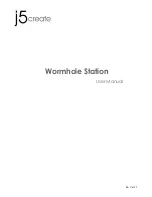
VENTING
The unit is a vented appliance and must be connected to a chimney/flue in accordance with the code,
using the chimney manufacturer's instructions. Minimum connector length is 4'.
Page - 3
This appliance must not be connected to a chimney flue servicing a separate
solid fuel burning appliance.
VENT DAMPER
This appliance may be installed with vent damper device Part No. MD8. Follow installation instructions
for this part. This part is to be installed by a qualified service person.
The vent damper is located in the first section (starter section) of pipe which attaches to the collar of
the appliance. Only this appliance may be served by the vent damper device installed on this unit. The
vent damper device should be inspected annually by a qualified installer.
The thermally controlled vent damper is an energy saving device designed for installation in vents of
listed gas-fired appliances equipped with a draft hood. The damper saves energy by preventing the
escape of heated air through the venting system, when the appliance is not in use.
It has four quadrants of bimetal which remain closed when the appliance is not in operation. Upon
ignition of the appliance, the hot flue gases reach the damper, causing the quadrants to flex, thereby
opening the vent passage within a short period of time. This internal flexing of the bimetal is the only
movement in the damper. No power supply or functional connection with the appliance controls is
required for operation.
Installation of vent dampers can increase the potential for condensation in oversized masonry chim-
neys. This is due to poor thermal insulation of the chimney and reduced air movement when the
damper is closed. We recommend that masonry chimneys be lined with materials such as Type B gas
vent, aluminum or stainless steel to reduce the chance of condensation. Most building codes, in fact,
require the lining of chimneys when gas appliances are vented into masonry chimneys.
Minimum connector
length is 48"




























